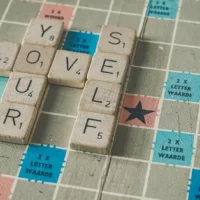It’s crucial to develop the ability to control one’s emotions and behavior. Consider this a step toward “earned secure attachment” if you’re aiming for it. Self-regulation might be a little difficult for people with anxious attachment styles to adjust to.
An already anxious person will experience a sharp increase in anxiety in response to certain events, references, or social interactions.
What Are The Triggers Of Anxious Attachment
People with anxious attachment were supposedly lacking a secure, loving parental relationship, going back to their early experiences.
This might be the result of parental inconsistency, emotional neglect, abuse, abandonment, or lack of attention to needs.
The absence of a secure, adoring parental relationship can still have an impact on an adult, especially in romantic relationships.
As was already mentioned, a person with anxious attachment needs constant attention and reassurance and frequently feels extremely dependent in relationships.
As a result, anything that causes that person to feel neglected or as though a loved one is separating from them could be a trigger.
For instance, if you go to a party with your significant other and they spend the evening talking to other people instead of you, you might feel left out and upset.
Alternatively, you might experience an emotional downward spiral if you sense a close friend drifting away from you or entering a new relationship.
What Does Anxious Attachment Look Like In Relationships
We previously talked about some characteristics of the anxiously attached person. Let’s now examine how it manifests in a relationship.
Many anxious adults will become their partners’ everything in a committed relationship. They believe that if they need me, they won’t abandon me.” They seek to feel needed.
However, despite your efforts, you are left wondering if they truly love you for who you are.
Open Hearts struggle with knowing or displaying the authentic version of themselves in a relationship. They frequently lose themselves in a relationship’s potential rather than its reality because of their uneasy, worthless feelings.
Because they are afraid of appearing vulnerable, anxious attachments frequently conceal their true emotions. They cause conflict by acting defensively or provocatively because their needs are not met or their feelings are not heard.

How To Heal Anxious Attachment Triggers
You follow these three steps:
Use Affirmations For Anxious Attachment
Affirmations – what are they? They are vows or declarations that give you emotional support and inspiration.
And I’m going to share with you some specific affirmations for anxious attachment right now.
When you notice yourself getting tense or uncertain while dating, use these techniques to alter your physiological state (it also helps to rewire your nervous system).
Focus On Understanding And Attuning To The Other Person
After much grieving and trauma processing, I have found this to be a wonderful aid in healing my anxious attachment patterns: leading with my understanding.
This means that you feel into the world of your lover, partner, or family member instead of your own anxiety-inducing feelings (your triggers) when you interact with them or are in a relationship with them in general.
Since being anxiously attached causes you to err towards focusing on your own fears (which, we have to admit, fears take you around in circles), it really helps to focus on something that you can control.
Your intention and capacity to share the emotions and values of the people you care about are two things that you can control.
See, anxiously attached people frequently invent a variety of unrelated scary tales in their minds (which are more concerned with past abandonment than with the present).
The energy that could be used to actually tune into the other person is wasted doing this.
Practice Bantering
Because bantering requires heightened sensitivity. And because it requires your presence, this is challenging for people with insecure attachment.
And for those who are insecurely attached, it’s harder to give presence. Banter (or high-value banter) is a communication style that is unique to humans.
We have the luxury of evolving toward this kind of communication because we are sophisticated, social animals.
However, the ability to smoothly transition into bantering is typically reserved for people with a secure attachment style. In this area of communication, those of us with insecure attachment styles frequently fall behind.
This is one of the reasons you’ll notice that some people naturally “get” banter while others, well, don’t naturally get it.
Pausing
Pay attention to what your brain is pressing you to do: text 10 times, cling to your partner, reach out desperately, appease or guilt your partner. When you’re not calm, it’s probably not a good idea to do these things.
Consider pausing and noticing when your actions are motivated by love and joy as opposed to a panicked, anxious sense of insecurity. Persuade yourself to put off your desired actions for at least an hour.
Communicate
When you’re calm, express your needs and emotions: You might feel that all the behaviors you wanted to engage in (such as desperately reaching out to your partner or clinging to them for support) are no longer as urgent once you’re feeling calm and have successfully self-soothed.
You could try saying, “I noticed that I became anxious when you said no to sex, because my brain tried to convince me I was being abandoned, which is silly and has a lot more to do with my childhood issues, and I’m working on managing this because it’s my responsibility.”
Conclusion
Finally, figuring out your attachment style can be extremely beneficial for both you and your partner. If you have an anxious attachment disorder or are dating someone who does, learn to identify triggering behaviors and try your hardest to be patient.
You can all eventually transition to a secure attachment style, but it takes some time to change your relationship behavior.
















